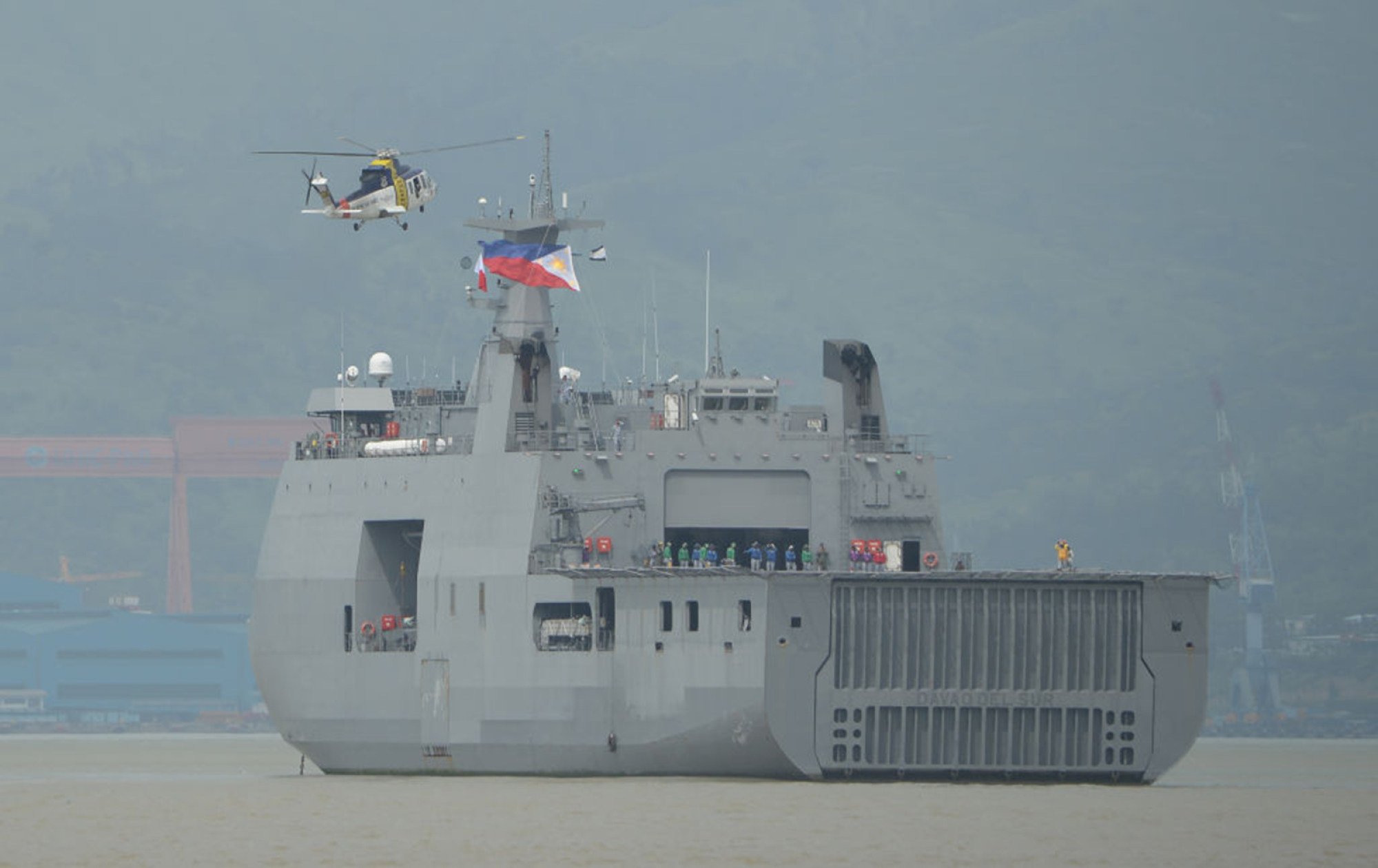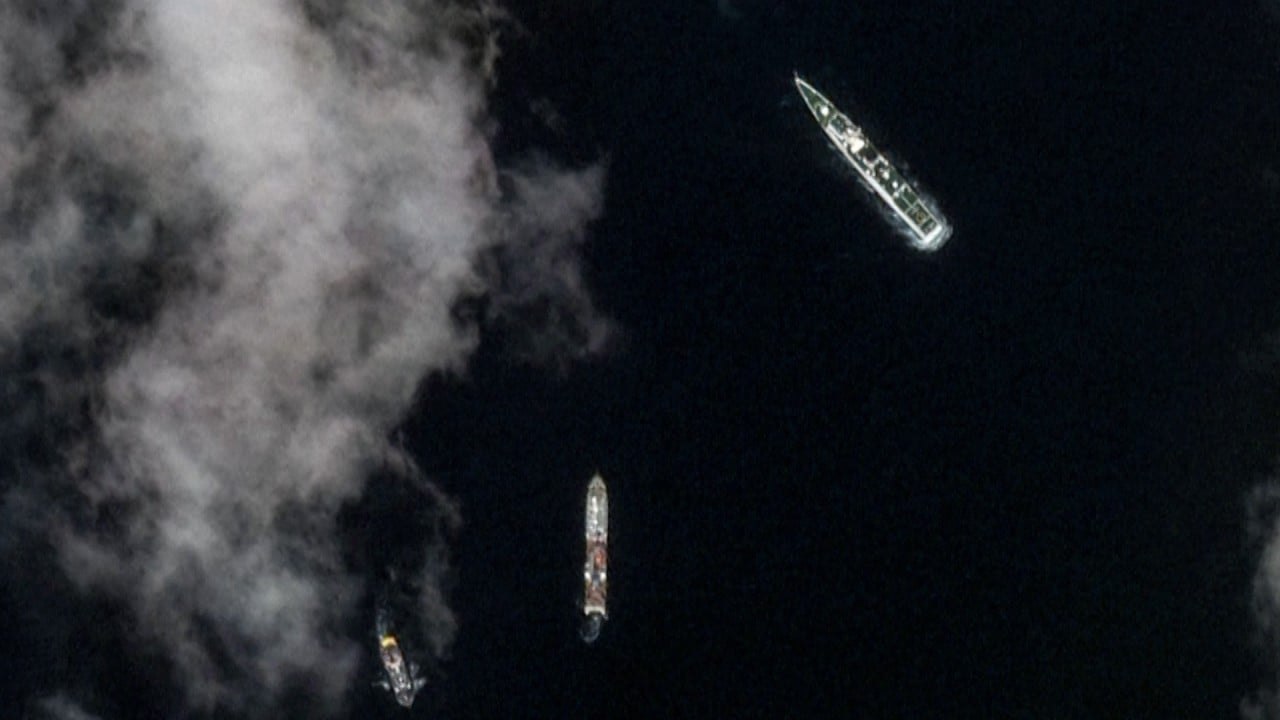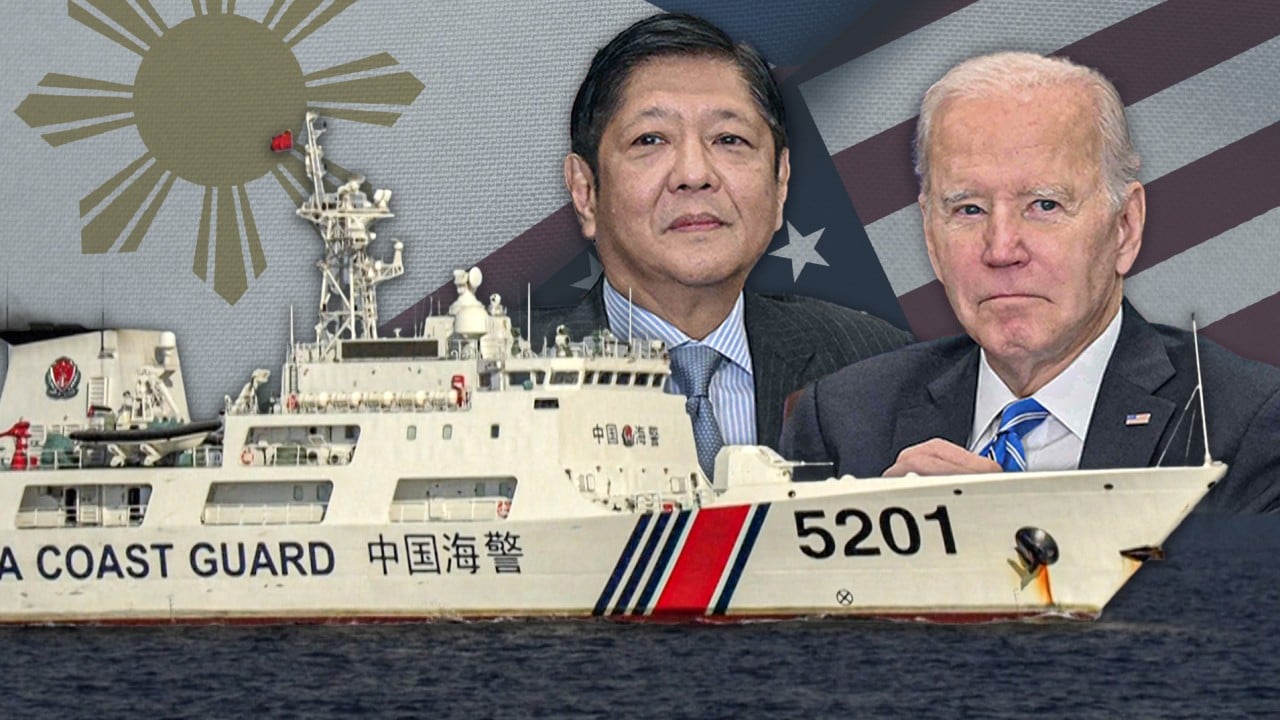Today, against the backdrop of Filipino reservists being deployed in northern Philippine islands less than 200km from Taiwan, and the United States military’s involvement in developing a port in that region, the Philippine leader’s remarks are seen to carry an eerie historical context.
Will stronger Philippine-Australia ties lead to Western support in South China Sea?
Will stronger Philippine-Australia ties lead to Western support in South China Sea?
Manila is currently mired in a maritime dispute with Beijing that has slowly been escalating in intensity, with China’s forces becoming increasingly forceful in asserting its claims. Chinese ships have all but blockaded a Philippine detachment in an outpost in the Second Thomas Shoal, most recently firing jets of water that smashed the windscreen of a Filipino civilian resupply vessel.
To help deal with the dispute, the Philippines has drawn closer to a host of countries, signing agreements with countries including Britain, Canada, India and Japan. But most of the support comes from the US, a treaty ally.
Since Marcos Jnr took office in 2022, tens of thousands of Filipino and American troops have conducted numerous drills, training exercises and joint patrols. The US has also supplied hardware and funding for developing bases in the Philippines that American forces can temporarily stay in.
On March 9, the Philippine navy announced that more than 100 reservists would be deployed to Batanes, a group of 10 islands that make up the northernmost province of the country, about 190km south of Taiwan. Two days later, Batanes Governor Marilou Cayco, herself a reservist, was quoted in a report as saying the US army would visit her province in April to discuss building a port on the main island.
According to a survey conducted by Octa Research last December and released on March 10, more than three-quarters of the 1,400 Filipinos polled said they were ready to fight for their country “if there is a conflict between the Philippines and a foreign enemy”. The highest percentage of those willing – 87 per cent – was from the age group 45-54.
All this activity resembles the bustle before the outbreak of the second world war in the Pacific in 1941. At that time, the Philippines was an American colony scheduled to be “granted” independence. An increasingly belligerent Japan sought to chase out the colonial Western powers, dominate the region and create a “Greater East Asia Co-Prosperity Sphere”.
According to Ricardo Jose, a professor at the history department of the University of the Philippines and a specialist in the Pacific War, back then “the Philippines didn’t have a choice in the matter”.
The Philippines’ location in Southeast Asia, along with the fact that it had big US naval and airbases, made it a frontline country and a definite target.
“By 1941, it was inevitable the Philippines would be invaded,” Jose said.

The professor said the Philippine Commonwealth tried to stave off hostilities. Its president then, Manuel Quezon, “tried diplomacy at the beginning of the Commonwealth government in 1935, also in 1937 and 1938 – he visited Japan in both years and tried to carry out secret talks to ensure the security of the Philippines”.
“But by 1940-41, with the outbreak of war in Europe and the intensification of the Sino-Japanese war, the diplomatic options closed and Quezon turned to the US for assistance,” Jose said.
Anticipating an invasion, the Americans in 1941 augmented the forces in the colony with men, aircraft, tanks and equipment, and Filipinos were called up for training. But the build-up and reinforcements were too little, too late – when the Japanese struck the US Pearl Harbour in Hawaii on December 7 to initiate hostilities in a surprise attack, the defenders weren’t ready. After holding out for four months in Bataan, the American forces surrendered and the Philippines became a Japanese colony.
In an interview with the Nikkei Asia newspaper last year, Marcos Jnr used the same term he mentioned in Canberra to point out how proximity would draw his nation to any conflict involving Taiwan, whose independence from mainland China the US seeks to maintain.
“We feel that we’re very much on the front line,” the president said.
Beijing regards the island as a breakaway province to be brought under mainland control – by force, if necessary. Many countries, including the US, do not officially recognise Taiwan as an independent state but oppose the use of force to change the status quo.
China poised for ‘long game’ with Manila over South China Sea disputes
China poised for ‘long game’ with Manila over South China Sea disputes
For Jose, “I think Marcos meant we were at the forefront of international tensions, in the front lines not of a war but heightened tensions.”
In the second world war, the Philippines became a frontline state not once but twice: the country had the unique distinction of being invaded two times, first by the Japanese in 1941 and then by the returning Americans in 1944.
According to Jose, “the official government estimate of lives lost was 1.1 million-plus. Out of a population of 17-18 million”.
“The Philippines was severely devastated in 1945. Manila’s business and political centre was destroyed and key cities like Cebu, Baguio and Zamboanga were also badly hit. Farm animals were lost, agricultural fields lay fallow,” Jose said. “Not to mention what little industrial machinery we had.”
But specialists said that despite the current references to World War II and the front line, and the defence build-up, it was highly doubtful there was going to be a war.
Justin Baquisal, a strategic intelligence analyst and a graduate student in the political science department of UP, said there was “no dispute on the Philippines being at the front line of maritime disputes, be it tensions in the South China Sea or Taiwan Strait, the Philippines is inextricably linked by virtue of its geography and proximity”.
He noted though that “the analogy with Japan in World War II is not correct”.
“Japan was a rising imperial power at the time, and it not only invaded the Philippines as a US colony, but also many countries in mainland Southeast Asia, like Singapore and Malaysia,” Baquisal said. “Southeast Asian states, some more than others, are frontline states because we are right at China’s doorstep.”
Risk of South China Sea conflict ‘much higher now’: Philippines’ Marcos Jnr
Risk of South China Sea conflict ‘much higher now’: Philippines’ Marcos Jnr
Professor Jose told This Week in Asia, “I don’t think the same thing can happen now, at least in the sense that the Philippines would be invaded and occupied, or fought over.
“The danger of tensions escalating in the West Philippine Sea is very real, but that would not lead to a World War II-style war. Given the advanced state of military technology today, a full-scale invasion of the Philippines would be counterproductive,” he added. “The potential conflict will remain in the maritime borders.”
Don McLain Gill, lecturer at the department of international studies of De La Salle University, predicted the tensions between the Philippines and China were not likely to drop.
“Manila’s desire to more actively safeguard its sovereignty and sovereign rights based on international law, through the deepening and broadening of security ties with traditional and non-traditional partners, creates problems for China’s desire to cement its sphere of influence and its narrowly driven ambitions in the South China Sea,” he said.
But he added, “To say this can lead to a direct shooting war seems unlikely, given that China is also aware of its military limitations and the risks that can be incurred from a direct war.”
According to Gill, China’s intent was “to alter the status quo further in its favour without the overt use of military force”.
“However, such a future is not guaranteed, given the possibility of miscalculation,” he said.



